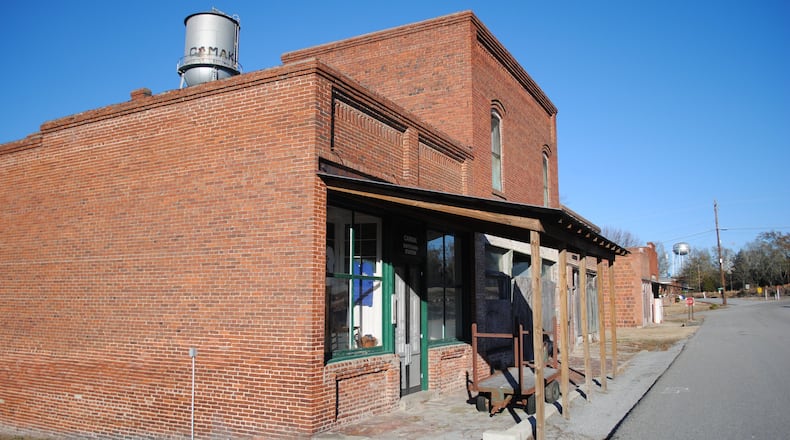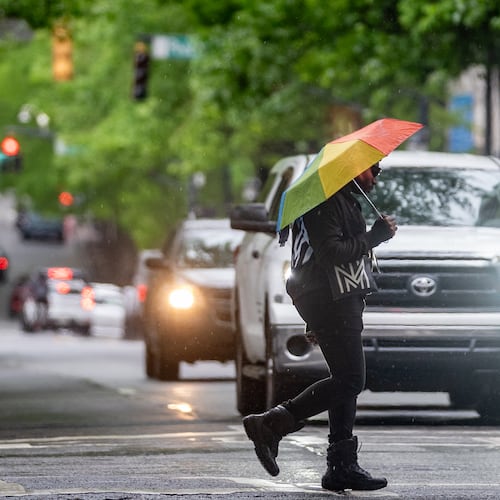Editor’s note: This story has been updated to correct information about the city of Grayson.
In the last year alone, more than a third of Georgia’s small towns lost population, underscoring the challenges of reviving rural areas.
New census estimates show Camilla fell below 5,000 residents, Sparks fell below 2,000, and Fort Gaines dropped below the 1,000-population mark. Milan fell to 661, a lost of nearly 7 percent of its population. All four are in South Georgia.
Even Georgia’s tiniest town, Edge Hill in Glascock County, got a little bit smaller, losing one of its 24 residents last year, the Census Bureau estimated.
Meanwhile, Georgia’s largest cities got even bigger last year, having no problem pulling in people from small towns and other cities.
“Many of the young people in these communities graduate from high school and don’t come back. They go to college, whatever, they don’t come back,” said David Bridges, president of Abraham Baldwin Agricultural College in Tifton and head of its Center for Rural Prosperity and Innovation.
Atlanta grew more than 1 percent in the past year and is now firmly pushing its nose up against the half-million-resident benchmark and is breathing on it heavily.
Its new population estimate: 498,044. It will cross 500,000 in the next year, if it grows at the same pace.
People moving from rural to urban areas is nothing new and isn’t limited just to Georgia — it’s been going on worldwide for more than a century, though there’s been a couple of times when rural towns bounced back a bit.
In recent years, however, the continued population loss has raised questions about whether anything can reverse the trend.
"There's been this hope that another 'rural rebound' will materialize, but the past decade has been really kind of dramatic in terms of rural depopulation nationally," said Jeffrey Wright, a demographer with the Carl Vinson Institute of Government at the University of Georgia.
More than half of Georgia’s small towns — with populations under 10,000 — have lost people since 2010, compared to fewer than 1 in 6 of all towns 10,000 and up, an Atlanta Journal-Constitution analysis of the census data found.
For example, tiny Pinehurst, in Dooly County in Middle Georgia, lost more than 1 resident in five between 2010 and 2018, the Census Bureau estimated.
Rural residents can face numerous challenges, including access to good jobs, transportation, economic opportunities and health care. Small manufacturing jobs have dried up. Modernization and innovation means fewer people are needed in farming jobs.
Meanwhile, folks aren’t having the huge families they had a century ago.
“So, the older generation is dying, the younger generation is moving away, and because there are perceived to be fewer business opportunities, financial opportunities, et cetera, it’s very challenging to get inbound population,” Bridges said.
Demographers expect there will be a continuing shift of people from rural to urban, Wright said.
But there are some bright spots for small towns as as well.
Jackson County, just northeast of Athens, was recently named one of the fastest-growing counties in America by the Census Bureau. Amazon opened an 850,000-square-foot fulfillment center there a couple of years ago.
One Jackson County town, Hoschton, has grown by more than a third since 2010 and is now pushing 2,000 residents. Another, Pendergrass, famous for its flea market, crossed the 500-person threshold.
And a few small towns in rural areas are growing like weeds, including Young Harris near the Georgia-North Carolina line, where the population has swollen by more than 80 percent since 2010.
The fastest-growing city in the state in the previous year: tiny Lake Park on the Florida-Georgia line, which broke 1,000.
And “small town” doesn’t necessarily mean “rural.” Grayson in Gwinnett County was the fastest-growing city in the Atlanta area from 2010-2018, swelling by 72 percent over that time. Last year, it grew by nearly 5 percent, according to the new data. Its new estimated population is 4,409.
About the Author
Keep Reading
The Latest
Featured





